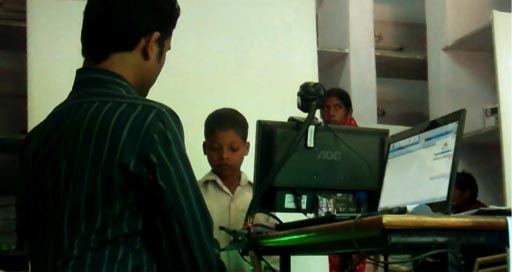The relationship between surveillance, big data and state power has been vociferously debated in both academic and popular press over the past several months (Boellerstoff 2013 and Crawford et al. 2014 among others). But what of instances where states leverage big data without an explicit surveillance focus? What kinds of questions should we be asking when big data appears in a project that doesn’t focus on, say, “security” (which we associate directly with surveillance) but on “welfare” or “development”? In this post, I explore this theme in the context of the ongoing Indian Unique Identification (UID) project (also known as “Aadhaar” or Foundation). The state-backed UID project wants to issue biometric-based identity numbers to all Indian residents, arguing that an ability to uniquely identity individuals is critical to the efficient administration of public welfare schemes. The biometric dataset that the UID is putting together towards its goal is already the largest of its kind in the world.
Speaking of Big Data

Enrollment agent at an enrollment center in a central Indian state
(Photo credit: Aditya Johri)
The UID project was initiated in 2009 and has three concurrent phases currently underway: (1) enrollment of individuals; (2) issuance of IDs; and (3) use of IDs to avail government and private services through authentication [1]. Targeted at a population of about 1.2 billion people, the UID project has issued 600 million+ identification numbers so far. In a world lately enamored by big data, a project of this scale has attracted attention and much hope, repeatedly being labeled a “game changer” for Indian governance.
Now, collecting data to make a population “legible” is not new in itself (Scott 1998, 2002). It has long been at the center of statecraft and states have traditionally sought to achieve such legibility along dimensions they needed to monitor in order to govern a territory: population census and land measurements, for e.g., facilitated military conscription and tax collection. Over time, the state’s ability to “see” its population became increasingly intertwined with its capacity to provide welfare benefits (Foucault 1978; Gupta 2013; Scott 1998, 2002). In the UID case, a further assumption is that only a “unique,” universal identity (rather than one that makes sense primarily in a local context) will allow for the efficient and just distribution of public services and welfare schemes. This rationale has been largely successful in making the collection of biometric and other details palatable and even acceptable to the political class and the Indian population at large. However, the UID project has its critics and they have pointed to a range of concerns with the design, goals and implementation of the project including the constitutional standing of the UID administration, privacy and security, and the high costs relative to the questionable benefits offered by the project (Khera 2011; Mukherjee 2011; Ramakumar 2011).
My own concern regarding the project goes further back, to the fundamental assumption that powers it: that access to information about a population can dramatically change the quality of government services offered to it, all else being equal. To me, this line of argument, now increasingly popular, feels uncomfortably close to technological determinism. I am going to term this belief – that access to information leads to certain predictable, largely positive, outcomes –“information determinism.”
A Case of Information Determinism?
What does information determinism look like for the UID and why should it matter? I would argue that it (a) attributes an intrinsic value to information, and in the process, (b) devalues the agency of actors and the social relations within which information circulates. Disregarding the role played by actors and relations is particularly important for a project of the scale and scope of the UID, whose design and implementation involved people in different social/geographical locations. The conception and design of the UID project happened in city offices in a relatively centralized fashion, while the enrollment phase of the project took place at over 30,000 enrollment stations all across urban and rural India, each station enrolling on average 50 people a day i.e. overall, a million enrollments a day on the field. (UIDAI 2014, 89). A 100,000+ trained and certified operators and supervisors conducted these enrollments. In a recent paper, we examined the enrollment phase of the project, focusing on what UID designers designed for, what enrollment agents encountered on the ground and what was left unaccounted for (Johri and Srinivasan 2014). We show that the focus on data is what aligns the often-separate goals and motivations of designers and enrollment agents towards a common goal. [2]
Project designers had anticipated the need for a balance between standardization and flexibility, given the diverse enrollment locations. In response, they put in place a number of measures to ensure an enrollment process that complied with minimum standards, while allowing for some customization based on local realities. For e.g., all enrollment agents had to complete a standard training module but were also required to be familiar with a specific region and its dialects.
But, in spite of these attempts to factor in local realities, we found that Scott’s observations about projects aiming for legibility held: the enrollment process could not capture metis or practical, experiential, local knowledge. Most crucially, they did not account for people’s existing relations with the state, which significantly shaped why people enrolled, what procedures they expected to follow and what they expected of their UIDs. We found, for example, that residents queued up for hours to get these IDs because they had heard that having the ID would translate to freebies from the state and that not having one would block them from services (in spite of the fact that by law, the UID cannot be made mandatory for availing these services). Worried that they would be left behind, some attempted (unsuccessfully) to bribe enrollment agents to process their IDs.

Lining up in front of an enrollment center in a central Indian state
(Photo credit: Aditya Johri)
Meanwhile, the enrollment firm had already worked with the government in the region on other projects. As a consequence, it was able to use state buildings as enrollment centers, which would not have been possible without its contacts. Even access to electricity for the center was managed through the firm’s pre-existing networks. We argue in our paper that these past experiences influence how agents and residents relate to the UID enrollment process. The point here is not that the ID or the process should have captured all manner of relations of enrollees. Rather, I suggest that these can never be fully captured. And that is precisely why the availability of information cannot be said to determine governance outcomes. In ignoring these relations and their inherent politics in shaping governance outcomes, I argue, information determinism proves potentially dangerous.
Technological determinism has long concerned researchers studying technology and society. Researchers of technology in development initiatives, in particular, have always worried about technology depoliticizing development (Ferguson 1994, Li 2007). We need to ask if information determinism might operate in a similar way and whether data might potentially become the next “anti-politics machine.”
Works Cited
- Ferguson, James. 1994. Anti-Politics Machine: Development, Depoliticization, and Bureaucratic Power in Lesotho. University of Minnesota Press.
- Foucault, Michel. [1978] 2006. “Governmentality.” In The Anthropology of the State: A Reader, ed. Aradhana Sharma and Akhil Gupta, 131-143. 1st ed. MA: Wiley-Blackwell.
- Gupta, Akhil. 2012. Red Tape: Bureaucracy, Structural Violence, and Poverty in India. Duke University Press Books.
- Johri, Aditya and Janaki Srinivasan. 2014. “Aligning with Data: Populating the ‘Unique Identity’ Infrastructure in India.” In ACM Proceedings of the Conference on Computer Supported Cooperative Work (CSCW), Baltimore.
- Khera, Reetika. 2011. The UID Project and Welfare Schemes. Economic and Political Weekly XLVI (9).
- Li, Tania Murray. 2007. The Will to Improve: Governmentality, Development, and the Practice of Politics. Duke University Press Books.
- Mukherjee, Arindam. 2011. Aadhar, A Few Basic Issues. Outlook, Dec 5.
- Ramakumar, R. 2011. Aadhaar: on a platform of myths. The Hindu, Jul 17.
- Scott, James C., John Tehranian, and Jeremy Mathias. 2002. “The Production of Legal Identities Proper to States: The Case of the Permanent Family Surname.” Comparative Studies in Society and History 44 (01): 4–44.
- Scott, James C. 1998. Seeing Like a State: How Certain Schemes to Improve the Human Condition Have Failed. Yale University Press.
- Unique Identification Authority of India. 2014. Aadhaar Technology & Architecture. Principles, Design, Best Practices, & Key Lessons. Planning Commission, Government of India.
Notes:
[1] The new Modi government is now considering folding UID into the National Population Register initiatives, with IDs issued only on the basis of citizenship.
[2] However, as critics have pointed out, this focus on data ignores larger questions such as the need for identities to be unique and how the portability of material goods associated with certain schemes (such as the public distribution system for food-grains) will be ensured to match the portability of identities across locations.
(Janaki Srinivasan got her PhD at the School of Information at Berkeley. Her dissertation is titled “The Political Life Of Information: ‘Information’ and the Practice of Governance in India.” She studied the UID project during her post-doctoral work at Virginia Tech.)
